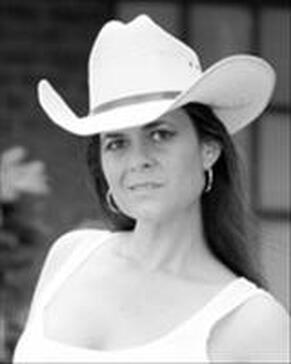 Would you like to get to know more about how the inner book brain of an Indie Author works? This is the place! Periodically, we'll invite an Indie Author to open up their brain, and show us inside. We'll have a conversation that deals a little bit with writing craft, reading influences, and some other fun stuff. Today, we thumb through the pages of Indie Author M.T. Falgoust's grey matter... Discover more about M.T. Falgourst HERE! What literary pilgrimages have you gone on?
My first book, a middle-grade action-adventure called The Gubbins Club: The Legend of Charlie’s Gold (5-Star Readers’ Favorite; NY Book Festival Honoree), is centered on the premise of what if the map inside Robert Louis Stevenson’s Treasure Island actually led to a real treasure, and it’s been sitting on everyone’s shelves for nearly 200 years and no one’s thought to look for it? With the strong influence Stevenson has on the work, I sent a copy of the book after it was published to the Robert Louis Stevenson Club in Edinburgh where the book is primarily set. The secretary loved it and passed it along to the then president of the club who lived in Robert Louis Stevenson’s childhood home. He loved it so much he purchased copies for the children in his life and I was afforded the opportunity to actually stay in the home myself! As a big RLS fan, it was a hoot to look out the same windows over the rooftops as he did. And, if that wasn’t enough to make a gal go ga-ga, I made a trip to The Writers’ Museum in Lady Stairs Close where I gushed over Ian Rankin’s original manuscript for Knots & Crosses. I must also confess, I spent one night at The Witchery in the Armory Suite where Dan Brown stayed and left an enigmatic riddle in the guest book a la DaVinci Code. I don’t think it has been solved to this day. I will likely go back-if only to solve that mystery! (P.S. I left one of my own, too!) What is the first book that made you cry? Old Yeller. Hands down. Don’t give me a book where an animal dies. I just can’t handle it. What is your writing Kryptonite? Time . . . keeps on tickin’, tickin’, tickin’ into the future . . . Do you want each book to stand on its own, or are you trying to build a body of work with connections between each book? Yes. Okay, that’s cheating--answering the same question with one word. Or maybe it’s just prudent editing. At any rate, I write the gamut. I have books, like my award-winning picture book Footprints (5-Star Readers’ Favorite; Green Book Festival Honoree) which are standalones, but I also have several books which are the first in what’s intended to be a series. My new title, The Augur’s Assassin: A Read Between the Vines Mystery (Wagging Tales Press, coming soon!), was wholly written with the concept that we would be revisiting Mystic, Connecticut and solving many more cases with the main character Zoe and her eclectic assortment of acquaintances. How did publishing your first book change your process of writing? With the publication of my first book, I proved I was a writer. Not necessarily to myself (I’ve known since I was 12 that this is why I’m here), but I now had tangible proof to all the folks who thought writing wasn’t a “real” job that it’s a thing. A real thing. And I think that’s where the process of writing changed for me. I started thinking of myself as a business and treating my writing that way. But you know what they say about people who have a job that they love...they never have to work a day in their life. As a writer, what would you choose as your mascot/avatar/spirit animal? A wolf. Writing can be a solitary pursuit, but a wolf also reminds me of loyalty which, as writers, we all must have. We must possess a fierce loyalty to the concept and characters of a story if we’re to see them (and the reader) successfully through the course of a 300-pg book. What did you edit out of your books? (keep it family-friendly, please) Some of my characters, and inevitably it’s the sidekicks, love to talk. They play. They get silly. They’ve been known to make me guffaw out loud at two a.m. in the morning when all sane people are asleep. However, sometimes they don’t know when to shut up! Even if I find them uproarious, if their banter is getting in the way of plotline or flow, they get the red ink! What one thing would you give up to become a better writer? Television. It’s bad enough I have commercial jingles from the 70s still rattling around in my head, but since binge watching has evolved . . . now, it’s near impossible to limit yourself to 60 minutes. What is your favorite childhood book? The Neverending Story by Michael Ende. Why? It’s right there in the title. What is the most difficult part of your writing process? Staying...SQUIRREL...focused. What is the easiest part of your writing process? The ideas. I’ve never been stymied coming up with an intriguing story. I keep a 6X9 ring binder. Right now, it’s about four inches thick and filled with ideas for short stories, children’s books, mysteries, thrillers, and screenplays that I want to write. That’s not counting the idea I wrote on the back of the utility bill this morning, or the one on the Starbucks napkin that I thought of during school carpool, or the one written in eyeliner on the bathroom mirror my husband is BEGGING me to Windex . . . you get the picture. A common misconception entwined with authors is that they are socially inept, how true is that? I can’t admit to being a viable representative cross-section. Besides being an author, I have served in the US Navy. I am a working actor. I am a certified paralegal. I am a certified Pre-K through 3rd teacher. I am a classically trained vocalist. I am an artist. I teach piano and guitar. I worked over 10 years in retail, and I have been a summer camp specialist for over fifteen years. Something tells me there is NOTHING in my makeup that even HINTS at social ineptitude. When did it dawn on you that you wanted to be an author? I don’t know if it was as much that I WANTED to be an author as I was forced into realizing here was something I was pretty good at it and I didn’t hate it. I lay the entirety of the blame on Mrs. Gussman, my fourth grade English teacher. She demanded I write a story even though my nine-year old self loathed the concept of having to come up with that many words in one sitting. Oh, and did I mention it had to be from the point of view of a pencil? “Who knows?” she suggested. “You might have fun.” Forty-one years later, here I am. I guess you could say I got the “point.” Who are your biggest literary influences? It’s a wild mix. Robert Louis Stevenson, as I mentioned, Edgar Allan Poe, Tony Hillerman, Terry Brooks, John Saul, Charles Dickens, Mary Higgins Clark, Jane Austen, Daphne DuMaurier, Mary Shelley . . . I could go on for five blog posts. What’s your favorite movie which was based on a book? Why? Okay. That’s not fair. But if pressed, I guess I’m going to have to say Jurassic Park. While there were some differences (aren’t there always?), I’m a sucker for the grand scope of Spielberg films . . . and when it’s based on an amazing techno thriller like Crichton’s? But I’d be lying if I didn’t say all of The Lord of the Rings films, including Martin Freeman’s movies, aren’t way up at the top of the list! How did it feel when your first book got published? How did you celebrate? I felt accomplished. As far as celebration, one day, I will. Right now, I’m too busy writing the next one. What is that one thing you think readers generally don’t know about authors? We . . . work . . . hard. When it comes to research for your books, are you a hunter or a gatherer? Talk about your research process. I start out as hunter, honing in on one very specific topic I know I need to get believably to the next plot point. Along the way, however, I think I morph into a gatherer, often tripping across something that intrigues me that I usually save and wind up working into the storyline because I think it will intrigue the reader as much as it did me. Take, for instance, the concept of weather control. In my adult action-thriller The Eye of the Storm (Clive Cussler Adventure Society Competition Finalist), I played with the idea of my eco-terrorist villain controlling a devastating hurricane. Far-fetched? Not as much as you think when you research the science in government white papers and other literature. Scary stuff! Could you be housemates with your characters? Why or why not? I think if I were, it would be the most hilarious therapy session ever! In some way, shape or form, most of my characters are a facet of myself. It may not necessarily be an aspect of my psyche that I like, or it may be one I could split a pizza with no problem. I think that’s true of many authors, though. We put a LOT of ourselves into our work. As far as being housemates? I guess I’d better write a character that doesn’t mind doing dishes. What’s your typical writing routine or schedule? Depends if I’m on a deadline. I’ve still been known to pull an all-nighter. Typically, however, I write from 9-2 every weekday and a little longer on weekends. But in truth, I’m kind of ALWAYS writing. I make ample use of the voice memo and note features on my phone, composing paragraphs or jotting down plot ideas whenever they strike. I wrote my children’s board book Ten Little Crawfish on my phone lying in bed one night when my husband’s snoring kept me awake! Writing can be an emotionally draining and stressful pursuit. How do you recharge? Pre-COVID, I loved to travel. Albeit, it was travel related to book tours, school visits, and literary festivals. The Sagittarius in me LOVES to wander. However, no matter what brought me to a location, I always took time to find some pretty sweet things to explore, no matter what city or state I was in . . . challenging hiking trails in Georgia, visiting all the mazes and labyrinths in San Francisco, or descending into the eerie dungeons of Edinburgh Castle in Scotland. My favorite spot to go, though, has a wooden porch that overlooks a valley, and the mountains rise in the distance. Do you prefer music or silence when you write? Do you have a writing playlist? What’s on it? Depends on what I’m writing, but I love the Pandora Journey channel on YouTube. Epic stuff! Which celebrity would you choose to narrate your audiobook? My action-thriller, The Eye of the Storm: Matthew McConaughey My Cozy Mystery, The Augur’s Assassin: A Read Between the Vines Mystery: Sandra Bullock My Middle-Grade Action-Adventure, The Gubbins Club: The Legend of Charlies Gold: Sean Astin What well-known author, living or dead, do you wish could be your mentor? Why? James Patterson or Stephen King. I WILL be that prolific, diversified and successful! What is your favorite of the six senses (touch, taste, smell, sound, sight, intuition) to write about, why? Smell because it’s the sense most strongly associated with memory. What is a favorite location you’ve written about? Have you visited that place? How did you choose which details to include? Edinburgh was AWESOME to write about for The Gubbins Club: The Legend of Charlie’s Gold. Truth be told, however, I hadn’t been there until AFTER I wrote the book. I did a TON of research, though. Neat fact: the gentleman at the RLS Club in Edinburgh asked me when the last time was that I’d been there. He said my details were so spot on it was like walking in his neighborhood. Goes to show you just where you can take your readers if you do the requisite research! Travel back in time (without negative effects for you or the timeline) what year do you visit? Why? That’s a tough one. I think it would have to be a simpler era, with less distractions and more face-to-face human interaction. I’ve always been fascinated with Victorian England as I am an avid Sherlockian. What is something about your hero or villain that drove their character, but you didn’t specifically tell your reader? In my picture book Her Royal Majesty, the Superhero Bride of Frankenstein (5-star Readers’ Favorite), my hero Lizzy is initially driven by the desire for acceptance and is mortified when she’s embarrassed by an errant strand of toilet tissue. Ultimately, she’s more motivated by the desire to help her fellow classmates and turns the situation on its ear with hilarious results! Whether I’m writing for children or adults, I think a truly memorable hero or villain is going to be one where the reader recognizes aspects of themselves . . . and who hasn’t had an embarrassing moment in their life? It’s what we do on the other side of that moment that demonstrates our mettle. Have you ever resuscitated a project you'd shelved? What helped it work better the second time around? Always. I still have material I wrote when I was twelve. Herman J. Flea: Adventurer at Large. It was a shamelessly “punny” piece I penned in sixth grade. Now, while we probably won’t see that work on the New York Times best-seller list anytime soon, I do have a piece that I started back in 1999 after stumbling across an intriguing definition in Black’s Law Dictionary (See. Ideas are everywhere, folks!). I originally conceived the piece as a screenplay and may still revise it and shop it around, but I also have begun translating into novel format. I think what will make it better this time around is a shift in point-of-view. Not the characters, but my own. In her book How to Write a Movie in 21 Days, author Viki King has an insightful chapter on how the writer’s age reveals what’s on their mind and, subsequently, what you write will be a metaphor for their life. According to King, in my thirties when I originally drafted the script, my life metaphor was “unfinished business.” Now, in my, ahem, later years, supposedly my life metaphor is “new beginnings.” The shift has given me fresh eyes and new insight on the material. It’s also fun to look at something you wrote awhile ago and find some nuggets that make you say “Hey, that’s pretty good. And I wrote that!” What do the words “literary success” mean to you? How do you picture it? There are SO many layers to the literary success onion. Theoretically, “literary success” for me is knowing, that at some level, my work as a whole helps to foster social cooperation and communication. That my words change worlds. That it reminds us that our connectedness to the world does not always mean that some have more, and some have less, but that we ALL have stories and THAT is what brings us together. I love calling myself a writer because it justifies the voices in my head. And I mostly write fiction because, let’s face it, the truth is a little hard to believe. But theory doesn’t always pay that utility bill (but that bill DOES make great scratch paper for ideas as we’ve learned). I would like to see a level of success where I can achieve everything I mentioned previously but do it from a place of financial security generated from my writing efforts. Would I welcome “success” on a Patterson, King, or Rowling scale? In a hot New York minute. But I started the professional writing life with a VERY specific goal in mind. A study was done with people who possessed an inclination for music. The results of that study found that if such folks did not cater to that inclination in some way, shape or form, they were 70% more prone to succumb to depression and/or depression-related illnesses. The study intrigued me as I theorized that this is likely true across the entire spectrum of creative pursuits: visual arts, dancing, writing, etc. For me, not having a creative outlet would be Dante’s tenth circle. So, I began to wonder, if you analyzed the rise in school violence along with the point at which arts education started being stripped from the curriculum, would there be an inevitable correlation? I started writing professionally because I want to get to the point of “literary success” where I can take a percentage of my book sales and establish a grant specifically to fund arts education in the schools. So, after all that, I suppose “literary success” for me means being able to give back. Can you tell us about your current projects? Currently, I am working on several book projects scheduled for March release. One is a delightful picture book tale of baseball and perseverance called M.V.P. If we can push through life’s challenges and disappointments, we can be our very own most valuable player. Another is about a little rabbit with big dreams of being Somebunny important, who eventually realizes if he looks in the mirror, he’s already the most important “somebunny” of all. And I’m SUPER excited to be releasing the long-awaited sequel, The Gubbins Club: The Curse of Atahualpa. The five heroes of The Gubbins Club are back. This time, they travel from London to South America and go deep into the heart of the misty Andes mountains . . .but something else lurks behind the veil. Smout and his friends join forces once again to follow the clues through the pages of history and solve a mystery worthy of the greatest detective of all time, Sherlock Holmes. From the towering shadow of Big Ben to the wilds of the South American jungle, they will risk it all to find an Incan treasure list to time. If you’re brave enough to join the club, remember the rules: 1) Follow the clues; 2) Find the treasure; and 3) Try not to get dead. Any advice you would like to give to aspiring authors? Write. Revise. Believe. Repeat. Please provide links and/or instructions about how readers can purchase signed copies of your books. Drop me a line at the publisher’s site at https://waggingtalespress.com. Visit the CATALOG and choose your titles. Pay securely online via PayPal. You can also visit amazon.com and barnesandnoble.com.
0 Comments
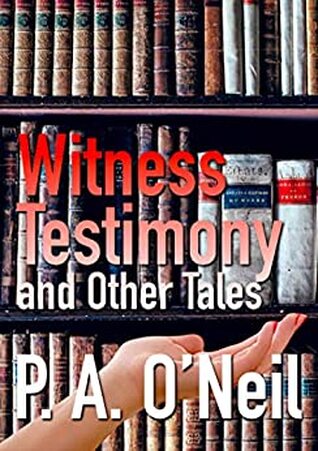 Witness Testimony was an interesting and engaging collection of short stories. When I first began reading, I found it difficult to ease into a reading rhythm because I had expectations, based on the title and cover. I opened this book preparing for the intrigue of courtroom drama, legal thrills, and witness interactions. However, that’s not what I found, so starting out was slow going for me. By the time I reached the second half of the book, I let go of my preconceived notions. Once I accepted that these stories, though not bound legally together, were indeed witness accounts of life, it then became easier for me to relax into the absence of pattern and enjoy the journey. Actually, the author allowed the reader to be the witness to a cross section of humanity with all its solaces, uneasiness, and eccentricities. Taken from that interpretation, the collection made sense. My strongest critique would be that the title and cover art set me up for a predisposition against that experience, initially. Overall, this was an enjoyable book. Here are a few of my favorite stories from this collection: The Bullfighter’s Waltz was a curiosity. A story that connects emotionally in a setting where emotion is not the expectation, was a pleasant surprise. I felt that I could easily relate to these characters, even though their day-to-day is very distant from my own. The humanity of this story was felt, rather than read. That was nice. The Matchmaker’s Reward entertained with a bit of fantasy. This is one story that left me wanting more. For me, it read perhaps as a last chapter for a larger novel… and perhaps it is… I hope it is. A bunch of questions were left unanswered, and I wanted to know more about the character’s history and their future. I wanted to know more about the magic and the rules behind how it is used, or how it isn’t. I enjoyed this story very much. It felt a little like a “Pat The Bunny” book for adults… a few words gave the reader so many tactile experiences, it left me wanting to learn more. The Sending was tremendously poignant for me. Everything about this story, the why behind it, and the minute details of spirituality, evoked something akin to a universal understanding. This story was delicate and powerful simultaneously. It offered just enough to allow for emotional transference, but not quite enough to lose the intellectual intensity of the moment. That duality, for me, made it a great read. I recommend this book to readers who enjoy the sensation of being a fly on the wall. These are tales experienced through the expression of the temperature of the room, rather than the cold distance of reporting. 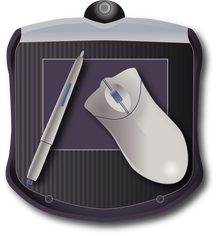 As with any profession, there are tools of the writing trade that will carry an author from their first book to their last. There are a bunch of other tools that are fun to use, and sometimes even useful, but don’t get hauled out of the toolbox very often. As with any tradesman, we carry lots of tools, but we’re most comfortable with a small handful. We like they way they feel to our hands and our imagination. There are also tools we may never touch, but we have them, just in case… you know… because you never know what the new book might need to give it a certain edge, texture, or polish. I have a large arsenal of tools. I have my phone with a Bluetooth headset and a small hand-held tape recorder (from my days as a newspaper reporter) for dictation. Because even if it is the most amazing idea ever… I learned early that it’s not really a smart plan to write what Drake quacks at me while driving a 5-speed manual transmission, on the freeway at 70mph, with a ball point pen and notebook on the seat of your car. That ticket took me a little while to pay off. Moreover, I’m lucky we both lived through it. I have multiple screens for my computer because I like to have one open for research, one for writing, and a third for email and social media (or during NaNoWriMo, the Discord server). I use a bunch of websites, some of which are listed in another article, HERE. Someday I’ll update the list. Plus, a bunch of “extracurricular” software tools that I use to do specific things while I’m planning my projects. I use them for things like developing deep-dive character maps, to design marketing materials, and book covers. I have one that makes e-book layout in multiple formats so easy I actually enjoy doing it, and I have a day planner software to keep my calendar so I can stay focused and not completely lose my mind from overwhelm. I also have the obligatory portable back up hard drives because sometimes clouds explode into monsoons, and all is lost. I’ll save the details about my “sometimes” tools for a future article. 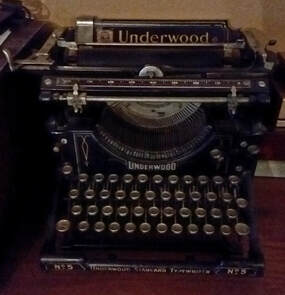 To be safe, and because sometimes it can be invigorating to “get back to basics”, I have analog tools, too. I use writing craft reference books and writer’s magazines. My shelves, and my tablet, are full of them. I have a collection of “feel good in my hand” pens that I use for Galley edits (and actual writing, when I’m out in the world, away from electricity… which, oddly enough, happens fairly often). Finally, I have a stack of empty notebooks and reams of paper, along with a home binding machine to help keep my hardcopy archives together… because you never know when we’ll be hit with an EMP and be forced to go back to crafting on paper. But out of all of these, I would say my favorite and most effective tool is a keyboard. When I was much younger, I was forced to write most everything by hand – which I hated. I’ve never enjoyed looking at my own penmanship… it’s just not that attractive to me. After a long writing session, my fingers tend to seize and writing can become painful (more so now that I’m getting older). A pen in my hand can never keep up with the ideas flowing from Drake’s imagination to me for translation and development. However, long-hand writing is beneficial when I write in my daily journal. It forces me to slow down and really think about what I’m writing… but that’s a study in meditation more than it is my passion for creative writing. Even though I railed against my mother forcing typing class on me in High School, I am grateful for the torture. If not for typing, my stories would never have graduated from poofs of quacked concepts to physical books. I wrote my poetry collection, Ideate Avail (my first book), in my very early 20s, on an old Underwood manual typewriter that my Grandfather gave me. This is when I learned that writing is an endurance sport. I can’t tell you how many times I retyped entire pages until they were perfect. In those days, I thought White Out was cheating. I was tremendously grateful when electric typewriters and then computers came along. I probably never would have written a second book if not for the advancement of technology. Insert, copy, delete, and undo are four of my favorite words in the writing craft. I still keep that typewriter close to my desk. Not only is it a beautiful reminder of my Grandfather, it also reminds me that there is nothing magical about the writing process. It takes focus, work, and tenacity. Writing isn’t “play”, although most of the time it is fun. Writing is serious business, not for the faint of heart. This brings me to my favorite tool, Writing Software, the focus of today’s article. I’ve used a few different software packages over the years. Simple text programs just weren’t enough for me. As my writing evolved, and I became more aware the importance Passionate Plotting was to Drake and me, I frequently went on pilgrimages to discover a software tool that would do everything I wanted it to… and I found several. Some didn't work for me, some I loved but are no longer available, and others worked for a short time, but left me wanting more.  About one, or maybe two years ago… I can’t recall the exact year now… many things about the COVID era are blurry for me… I discovered my current software love, Plottr. This is an amazingly well-developed tool! It started out as an elegantly simple writing tool that included a timeline and writing dashboard for plot points, plus space to develop characters. I found the fluidity of moving through plot points and writing directly inside the program a delight. Since I made my discovery, the software has evolved into an incredible tool that keeps answering every “I wish” request Drake makes. It not only has a timeline with an integrated outline, but detailed plot point writing space, character development and place development spaces, a fantastic collection of “get started” templates, character templates, story bibles to keep all your stuff organized, color coding for almost everything, tagging features, the power of drop and drag rearranging of your outline without losing continuity, and so many other incredible features… PLUS, it exports to MS Word. This is important for that final edit and layout process. Not to mention… but I will mention it (haven’t you always found that an odd phrase?) They are constantly adding more features, every month, or so it seems. Aside from all these wonderful things that make writing with Plottr a joy, the price is astounding! At the time of this writing, to have this program installed on one device is just $25 per year! For three devices, it’s just $45! Nope, that’s not a typo. It’s really THAT inexpensive. Go visit their website and look it up for yourself! I’ve got it installed on my laptop and my tablet. I save my documents to my cloud storage… but now, they’ve just come out with a new version, called PRO (available shortly), which will sync across devices, seamlessly! That, and this new version does a bunch of other nifty stuff, too. I can’t say enough about the wonderful customer and technical support, and the great tutorials and video walk-throughs. These fine people make it very easy to fall in love with their program. I hope this company never goes out of business. I can’t imagine finding another writing software package that meets all of my needs and is as intuitive to use. Okay, look, I’m not a paid spokesperson, or even an affiliate. They’ve given me a way to be rewarded for my referrals, but for the price they’re NOT charging me to use this fantastic software, I’d rather they keep the money to work on the next development version. I’m telling you about this software because I use it… every day. I have seen how it has improved my writing process, and I want to help you find a tool that perhaps helps you, too. Not all writers are Passionate Plotters. I have lots of friends who are dye-in-the-wool Pantsers. I have friends who still love to write long-hand and produce 400-page novels doing it that way… J.A. Bullen, I’m looking at you! I’m not quite sure how you do it, but the fact that you do it in a way that works for you is Sacred to me… not to mention, but I will, Fascinating. As I’ve said in blog articles and on social media posts before, one of the things I love best about our writing community is that there is no “one” way to do it “right”. Artists find different tools and methods that work best for them through their creation process. It makes the work more interesting to watch at a creation level, as well as more lovely to enjoy at an audience level. I LOVE that about us! Not all writers will use this software to its fullest extent, either. You don’t have to. But if you’re a writer who enjoys having a bit of a plan, and someplace to keep that plan organized, I can’t think of a better tool to help you do that than Plottr. |
WelcomeYou'll find some interesting stuff here... some Op Eds, some Information, Book Reviews, and More. Poke around the categories and see what ruffles your feathers... in a good way! Archives
July 2024
Categories
All
|
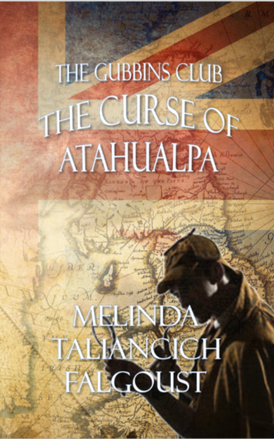
 RSS Feed
RSS Feed